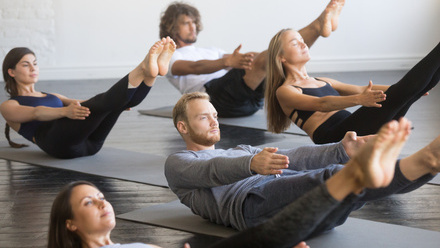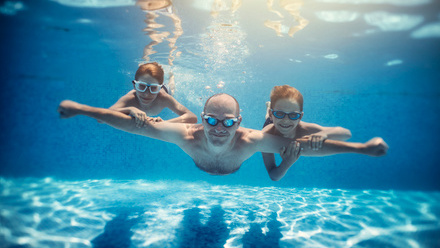As the number of COVID-19 cases continue to emerge many of us are being requested to stay at home in self-quarantine if we have been exposed. It’s important to still try and stay active though as sedentary behaviour like sitting down watching TV and working at a computer can quickly lead to very low levels of physical activity. Inactivity can have lots of negative effects on your health, well-being, and quality of life. Self-quarantine may also cause additional stress and challenge your mental health. Both physical activity and relaxation techniques can be valuable tools to help you remain calm and continue to protect your health during this time.
How much activity should you do?
Adults should do some type of physical activity every day - ideally at least 150 minutes of moderate intensity activity or 75 minutes of vigorous intensity activity every week. In addition, adults should do strengthening activities that work all the major muscles (legs, hips, back, abdomen, chest, shoulders, and arms) on at least two days a week. When you are in quarantine and are unable to leave your house, the things you can do are obviously more limited. Any type of activity is good for you. It’s important to reduce the time you spend sitting or lying down (like watching endless movies or working for long periods at your computer) so break up long periods of not moving with some activity.
Every short bout of physical activity adds up towards your weekly recommendations.
What can you do?
You won’t need any special equipment, or lots of space, to achieve your weekly activity target. Here’s a few ideas to get you started:
-
Take plenty of short, active breaks throughout the day. Every short bout of physical activity adds up towards your weekly recommendations. Walk around the house, dance to music or play with the kids. Clean your house with vigour, make your bed daily and mop the kitchen floor. Do a bit of gardening or mow the lawn if you’re lucky enough to have one.
-
Follow an online exercise class, such as the NHS Fitness Studio sessions. There are masses of other online exercise classes available and many of them are free e.g. on YouTube or Instagram live videos. Follow one you like, but make sure it suits your baseline level of fitness and if you’ve never done a particular exercise before, be cautious and aware of your own physical limitations.
-
Track with an app - the cost-free NHS weight loss app or Active 10 app can help you track the amount of exercise you do each day.
-
Stand up! If you call a friend for a chat or phone a colleague at work, stand or walk around your home while you speak instead. Could you work standing up? Consider setting up a standing desk.
-
Walk around. Even if you have a small space, walk around as much as you can and as often as you can, or just march or jog on the spot.
-
Set an alarm on your phone at intervals throughout the day. This is to remind you to reduce your sedentary time by standing up and moving around every 30 minutes or so.
-
Relaxation is also important. Try seated meditation. Sit comfortably on the floor with your legs crossed (alternatively, sit on a chair). Ensure your back is straight. Close your eyes, relax your body, and progressively deepen your breathing. Concentrate on your breath, trying not to focus on any thoughts or concerns. Remain in this position for five to ten minutes or more, to relax and clear your mind.




